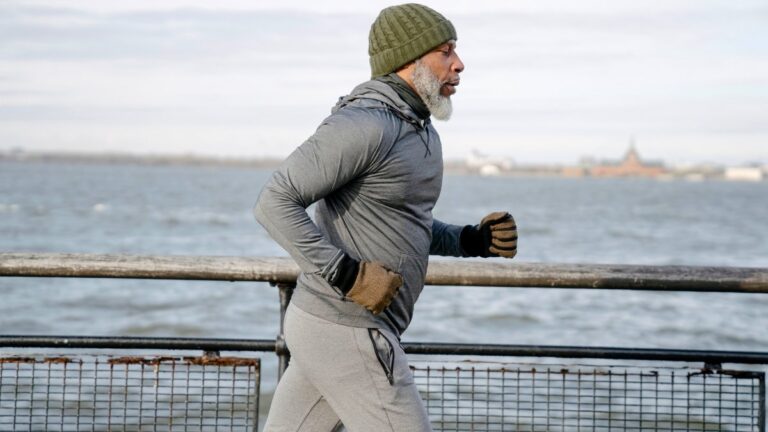Experts Say These 5 Exercises Can Add Years to Your Life and Strength to Your Muscles
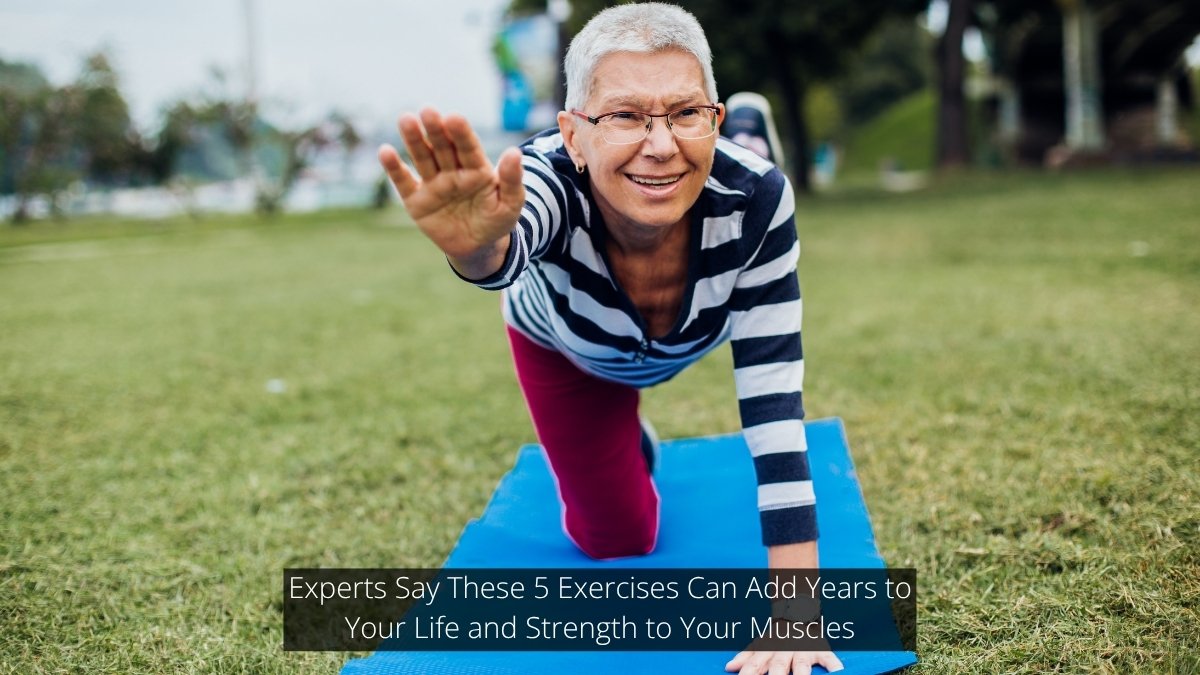
Experts say the right exercises can do more than make you look fit—they can actually add years to your life. Not all workouts are equal. Some boost heart health, others build muscle, and a few improve balance and flexibility.
Doing a mix of exercises strategically can help your body stay strong, your mind sharp, and your energy high.
These five exercises are backed by research for their impact on longevity and overall health. From strength training to high-intensity intervals, and from balance work to flexibility routines, each one plays a specific role.
You don’t need to spend hours in the gym—just consistent, focused practice. In the next sections, you’ll learn exactly what to do, why it works, and how to safely fit these exercises into your routine for lasting results.

🏃♂️ 5 Research-Backed Exercises That Add Years to Your Life
Click each exercise below to discover the science behind longevity
🎯 The Longevity Formula
Combine all 5 exercises for maximum lifespan and health span. Small, consistent effort beats sporadic intense workouts. Read the full article below for detailed instructions, safety tips, and how to start at your fitness level.
Exercise #1 – Squats: The Foundation Movement for Lifelong Mobility
Every time you sit down on the toilet, get out of your car, or pick something off the floor, you’re doing a squat. These simple movements become nearly impossible when your leg muscles weaken. And when you lose that ability, you lose your independence.
Research shows people ages 70-79 with stronger quadriceps had a significantly lower chance of dying over six years. Your leg strength isn’t just about fitness—it’s about survival. Strong legs mean you can walk, climb stairs, and avoid falls that could end your life.
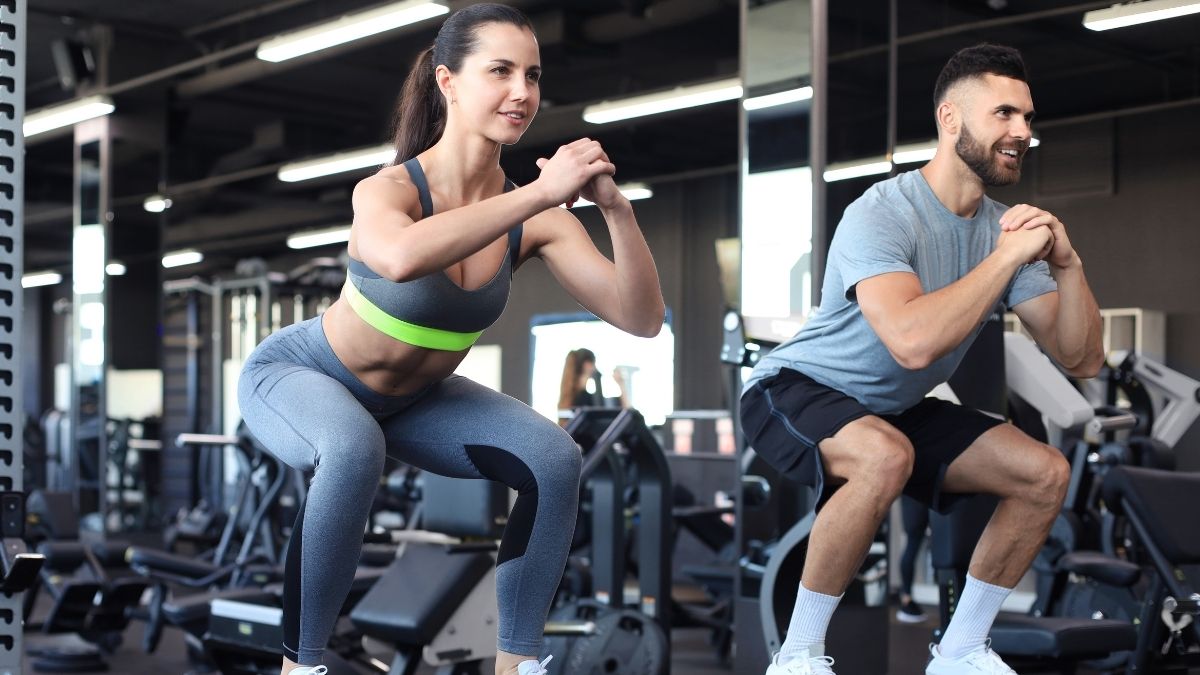
Squats work your glutes, quads, hamstrings, and core all at once. They also build bone density in your hips, thighs, and feet. This matters because weak bones and weak muscles are what put people in nursing homes.
Here’s how to do a basic squat: Stand with feet shoulder-width apart. Keep your chest up and look straight ahead. Push your hips back like you’re sitting in a chair. Lower down until your thighs are parallel to the ground (or as far as comfortable). Push through your heels to stand back up.

Can’t go that low? That’s fine. Hold onto a countertop or table for balance. Go down only as far as feels safe. Even quarter squats build strength.
Start with 2 sets of 15 reps, three times per week. Once that feels easy, hold light dumbbells at your sides. Progress slowly—your joints need time to adapt.
Exercise #2 – Zone 2 Cardio: The Metabolic Health Secret
You don’t need to run until you collapse. Slow, steady cardio might be more powerful for living longer than any hard workout you’ve ever done.
Zone 2 cardio training means exercising at 60-70% of your max heart rate. That’s the pace where you can talk but feel slightly out of breath. If you can sing, you’re going too slow. If you can’t speak in full sentences, you’re going too hard.

Here’s why this matters: People who maintained aerobic fitness through moderate-intensity exercise had a 30% lower risk of dying compared to those who sat around. A 2018 study of over 120,000 people found those with higher VO2 max lived significantly longer.
Zone 2 cardio makes your cells better at producing energy. It improves how your body burns fat and handles blood sugar. These changes protect you from diabetes, heart disease, and early death.
Calculate your Zone 2 heart rate: Take 220 minus your age. Multiply that number by 0.6 and 0.7. If you’re 50 years old, that’s (220-50) = 170. Your Zone 2 range is 102-119 beats per minute.

Activities that work: brisk walking, cycling, swimming, or light jogging. Pick what you enjoy because you need to stick with it.
Aim for 3 hours total per week, broken into 45-minute sessions. That’s three or four workouts weekly. Boring? Maybe. But it works.
Exercise #3 – Push-Ups: Upper Body Strength for Independence
Imagine you fall in your kitchen. Can you push yourself up off the floor? Or think about carrying two bags of groceries from your car. Upper body strength isn’t about looking good—it’s about staying independent.
Push-ups work your chest, shoulders, triceps, and core all at once. They help improve endurance and stability so you can be steadier on your feet as you age. But here’s the surprising part: research shows your ability to do push-ups correlates with lower heart disease risk.
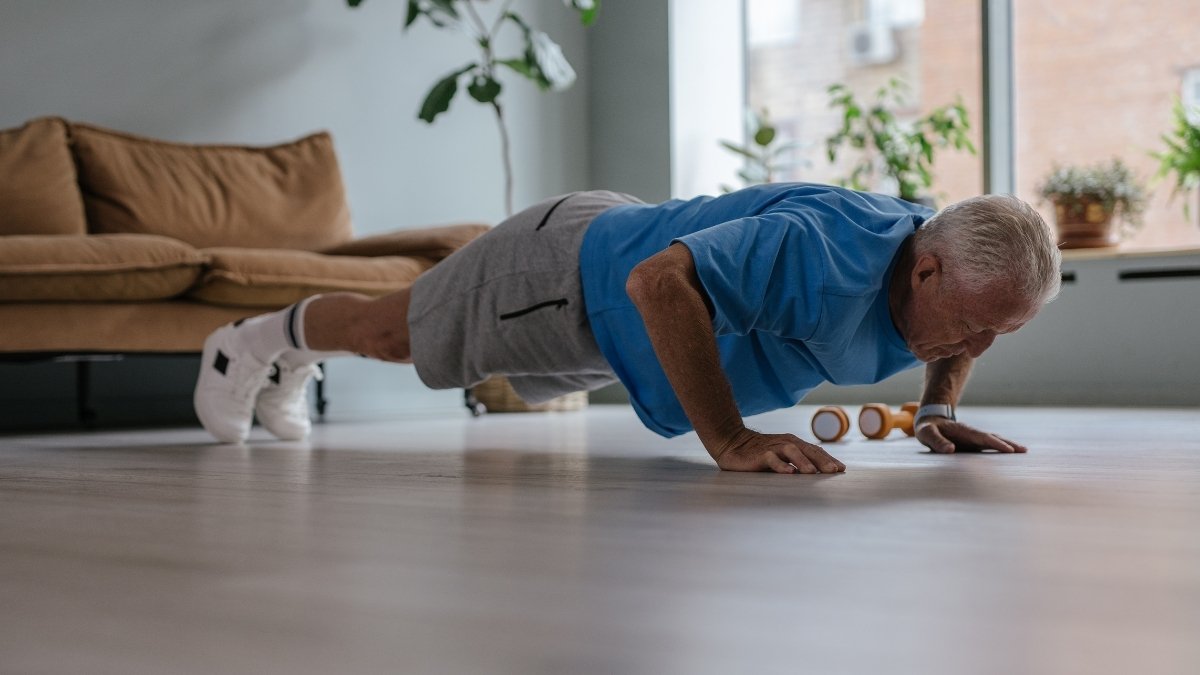
Strength training for women who train 2-3 days a week showed a 30% reduction in cardiovascular mortality. Your muscles and your heart are connected in ways you might not expect.
Can’t do a regular push-up? Start where you are. Wall push-ups: Stand facing a wall, place hands flat against it, lean in and push back. Elevated push-ups: Use a counter or sturdy table. Knee push-ups: Get on all fours, keep your back straight, lower your chest down.
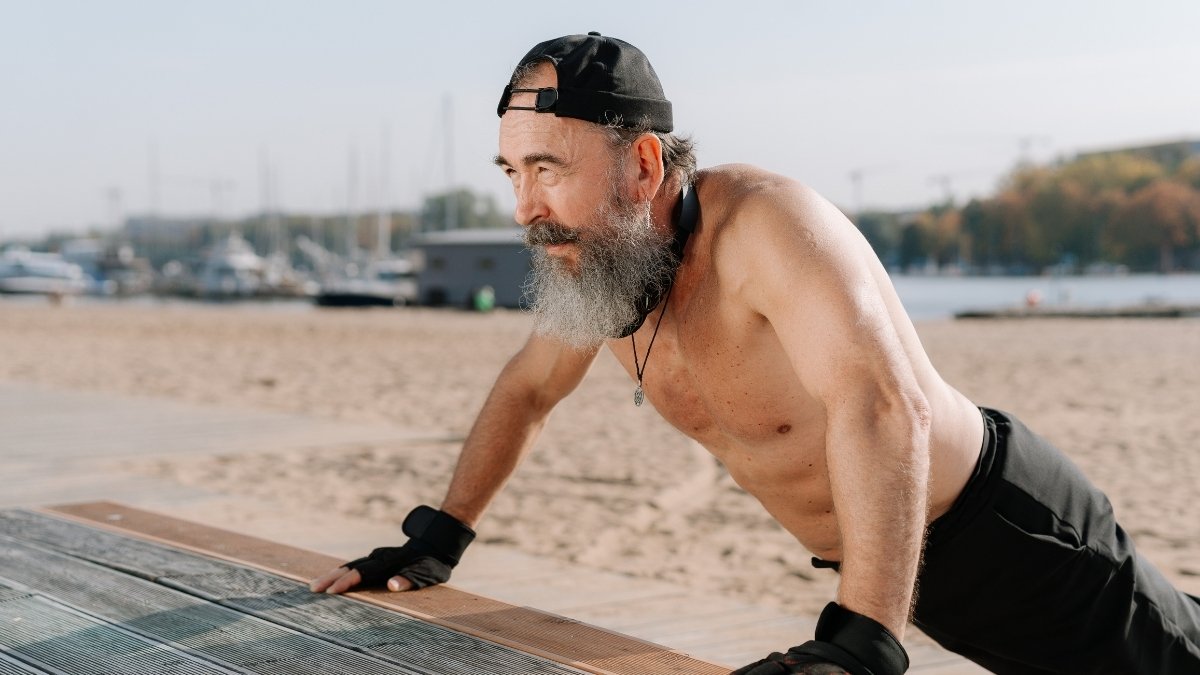
Proper form matters. Keep your body in a straight line from head to heels (or knees). Don’t let your hips sag. Lower until your chest nearly touches the ground. Push back up.
Start with 3-10 reps of whatever version you can do. Do them 2-3 times per week. Add one rep each week. In three months, you’ll be stronger than you think.
Exercise #4 – High-Intensity Intervals: The VO2 Max Booster
High-intensity interval training (HIIT) pushes your heart and lungs more than steady exercise. This helps raise VO2 max—the maximum oxygen your body can use. Higher VO2 max is linked to longer life and lower heart disease risk.
HIIT is different from Zone 2 cardio. Zone 2 builds endurance at a steady pace, while HIIT challenges your body in short bursts. Both are important—you need endurance and intensity for lasting health.

Safe HIIT options vary: beginners can try 8 x 20-second sprints with 10-second rests (Tabata style). Advanced exercisers may do 4 x 4-minute intervals at 90–95% of max heart rate with 3-minute recoveries.
Research shows long intervals (≥2 min) done regularly over 4–12 weeks can increase VO2 max by about 1.0 L/min. Studies also show exercise intensity predicts heart and overall health better than just exercise volume.
HIIT is intense. Skip it if you’re injured, have heart issues, or feel unwell. Warm up, cool down, and listen to your body to prevent injuries.

Aim for HIIT 1–2 times per week. More can backfire and increase injury risk. Combine this with Zone 2 sessions for a balanced, longevity-focused fitness plan.
Exercise #5 – Balance Training: Your Fall Prevention Insurance
Falls are the leading cause of injuries in adults 65+. About 1 in 4 older adults experience a fall each year. Improving balance can protect your independence and confidence.
Balance exercises fall prevention isn’t just for seniors—it helps everyone stay steady and strong. Simple exercises make a big difference. Try: single-leg stands, heel-to-toe walking, tree pose, or warrior pose.
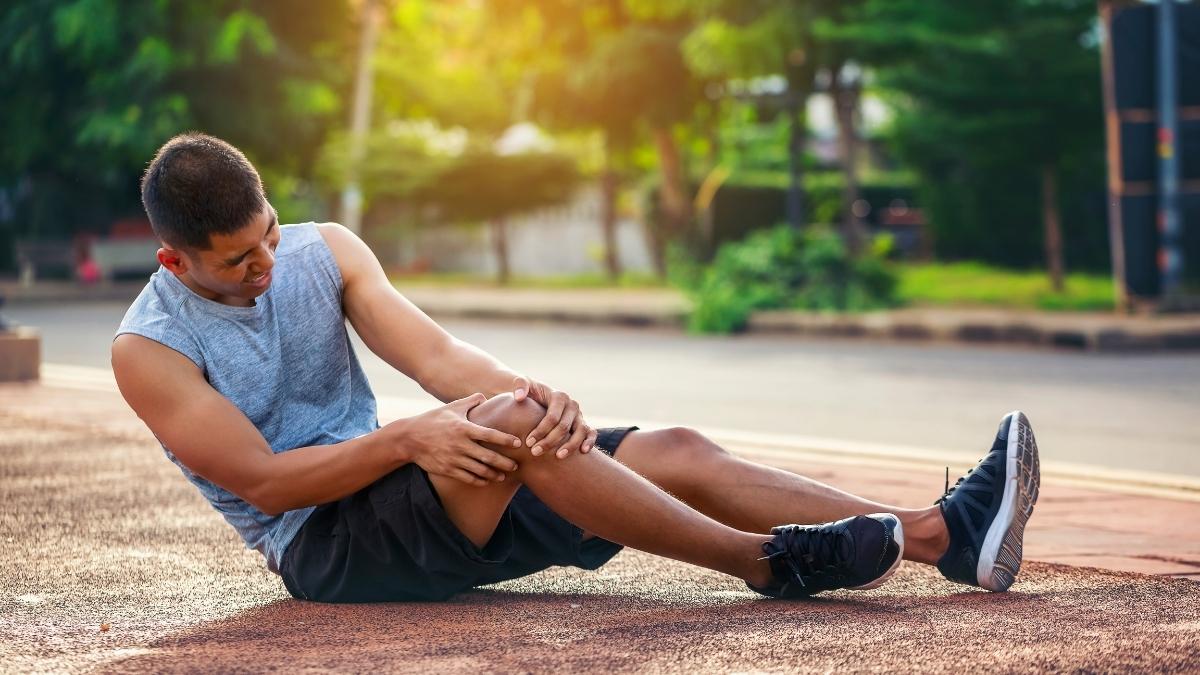
Yoga and tai chi are excellent structured options. Studies show tai chi can reduce falls by 20%, while yoga programs improved balance and mobility in people 60+, reduced fear of falling by 6%, and increased static balance by 4%. Practicing near a wall or chair keeps you safe at first.
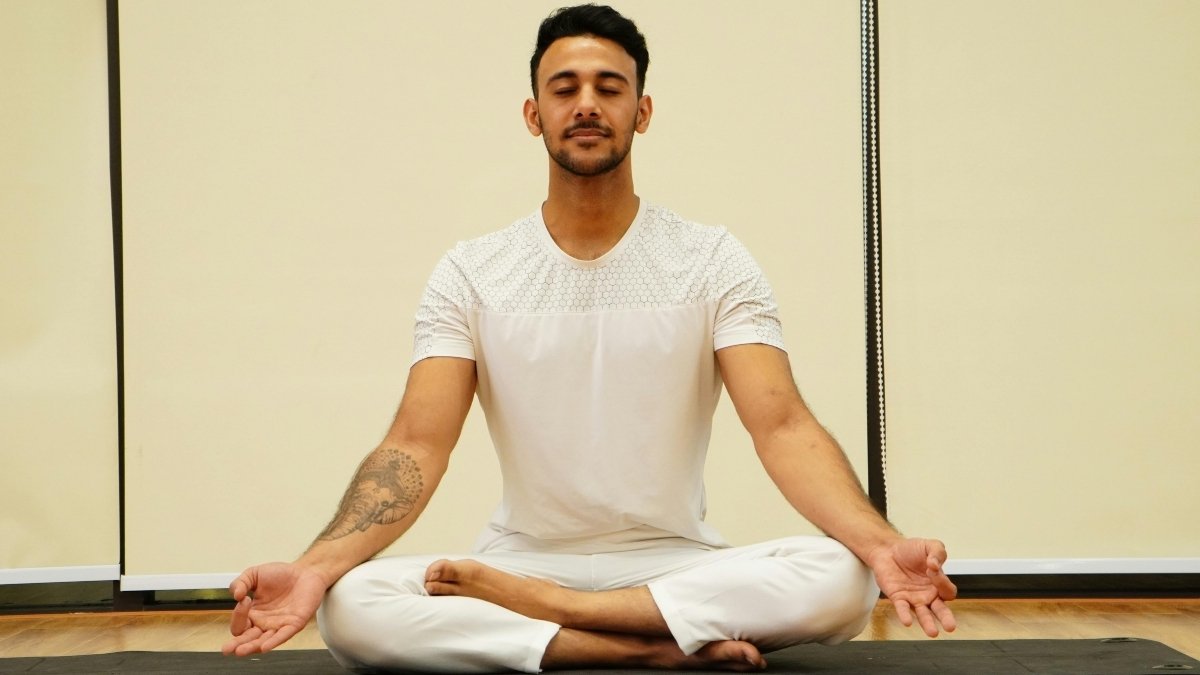
Daily practice of just 5–10 minutes can improve stability over time. Combine simple exercises with yoga or tai chi for best results. Consistency is key: small, steady practice keeps you upright, confident, and independent as you age.
At the Last,
Experts agree that combining these five exercises can significantly improve your health and longevity. Strength training builds muscles that support daily movement and metabolism. Zone 2 cardio strengthens your heart and keeps your endurance high. High-intensity intervals push your VO2 max, boosting your heart and lung capacity.
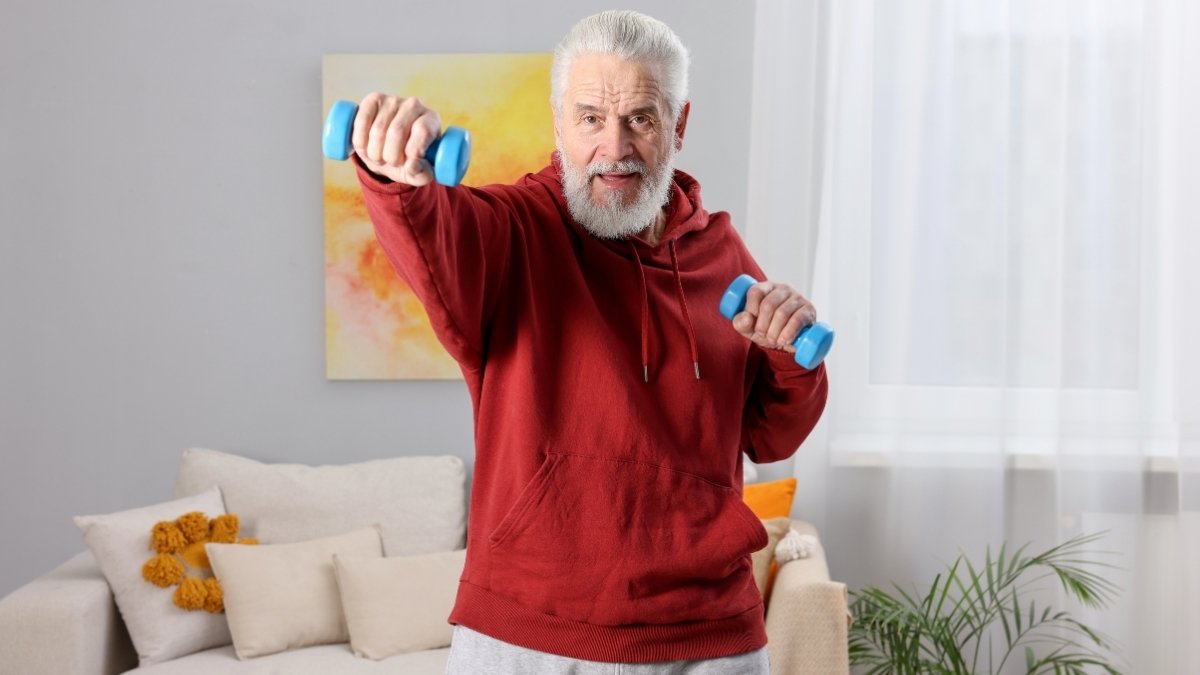
Balance exercises reduce the risk of falls and preserve independence. Flexibility and mobility work keep joints healthy and prevent injuries. Doing these consistently, even a few times a week, is more powerful than sporadic workouts. Small, steady effort in these areas can add years to your life and strength to your muscles.





